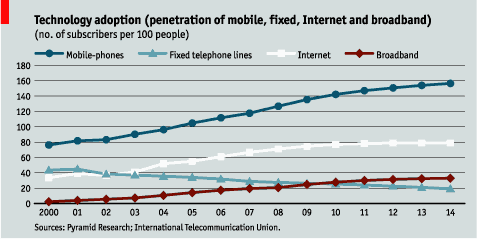 Sometimes “customer satisfaction scores” have to be evaluated carefully, as it is not clear what predictive value such scores actually have. There are often multiple reasons.
Sometimes “customer satisfaction scores” have to be evaluated carefully, as it is not clear what predictive value such scores actually have. There are often multiple reasons.
Though customer satisfaction logically is related in some way to customer retention and churn, the relationship is complicated.
Even “satisfied” or “very satisfied” customers will churn, because the other providers are perceived to provide equally-good experiences, and might from time to time also offer better prices or features.
But there are other instances where even rising satisfaction scores are perhaps not what they seen. Consider the example of a declining business, such as fixed network voice services, which might shed about half its subscribers over a decade.
As consumers bleed away from fixed network service providers, satisfaction scores are rising, because the unhappy customers are leaving. Those who remain are more satisfied than the customers who have left, according to the American Customer Satisfaction Index (ACSI).
The fixed-line industry’s ACSI score got better nearly six percentage points, reaching 74, with gains for individual companies ranging from four percent to eight percent, ACSI reports. Those are big gains indeed, for the ACSI index.
Verizon improved six percent while Cox gained four percent, to tie for the lead at 74. AT&T follows closely at 73 while Charter scored 72.
CenturyLink’s score improved eight percent, and Comcast got better by six percent, both reaching a score of 71. Time Warner Cable scored 68.
To be sure, it is possible all the fixed network service providers are doing much better than they have in the past. But ACSI also cautions that the reason satisfaction is growing is that unhappy customers are deserting the service.
That might not be such a great way to earn higher customer satisfaction scores.
ISPs were ranked for the first time in the latest ACSI study, and scored the lowest of any industry studied by ACSI.
Internet service providers were rated for the first time, with an average score of 65, the lowest score among all 43 industries tracked by ACSI, which ACSI attributes to high prices, service reliability, speeds and video-streaming quality.
Only Verizon’s FiOS and the aggregate of all other smaller ISPs break out of the 60s with identical ACSI scores of 71.
Cox beats the average at 68, followed by AT&T U-verse and Charter at 65. The low end belongs to CenturyLink at 64, Time Warner Cable at 63 and Comcast at 62.
Video subscription services offered by cable operators, fixed line voice services and even mobile services traditionally have not scored all that high for customer satisfaction, it might also be noted.
